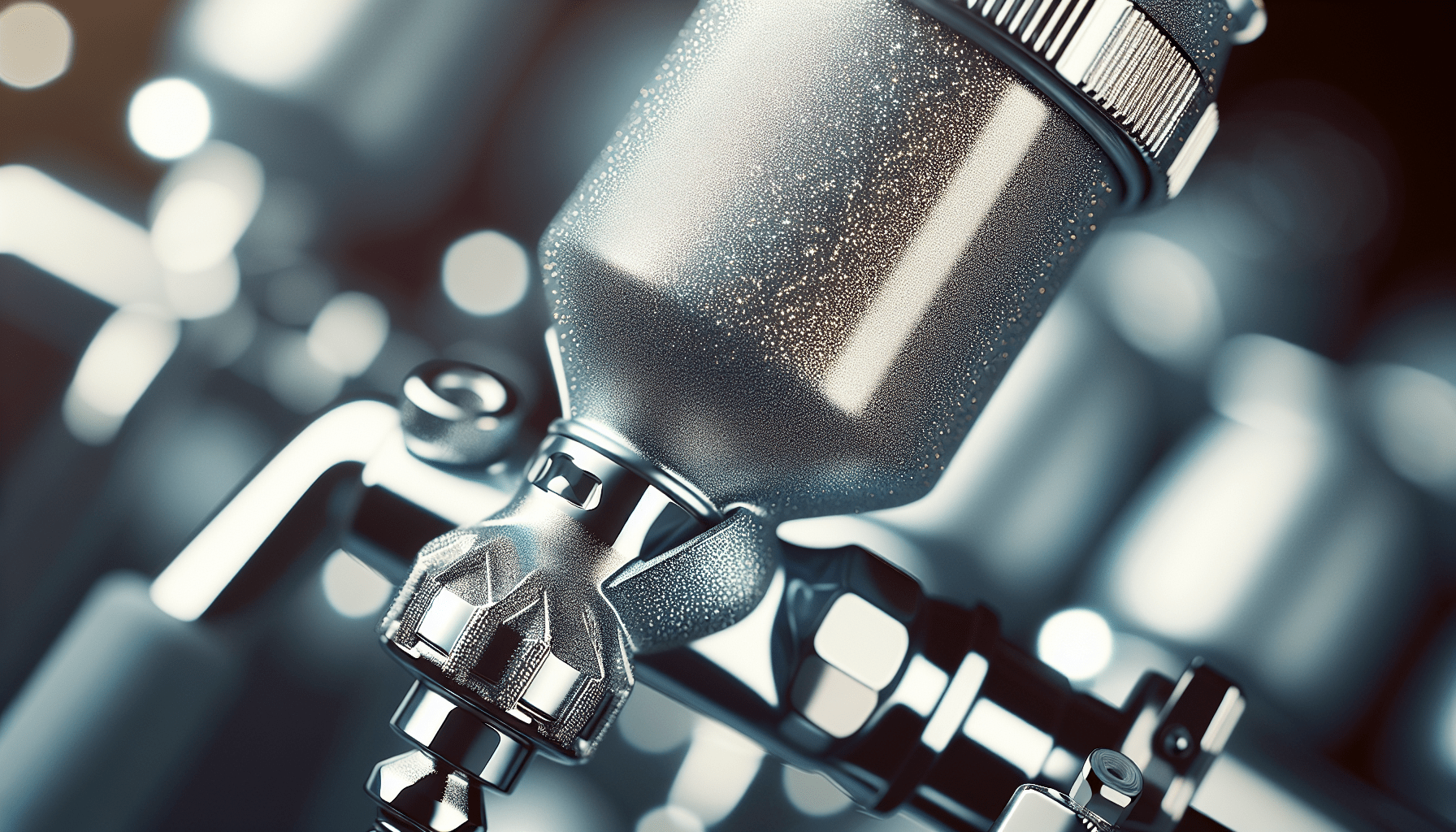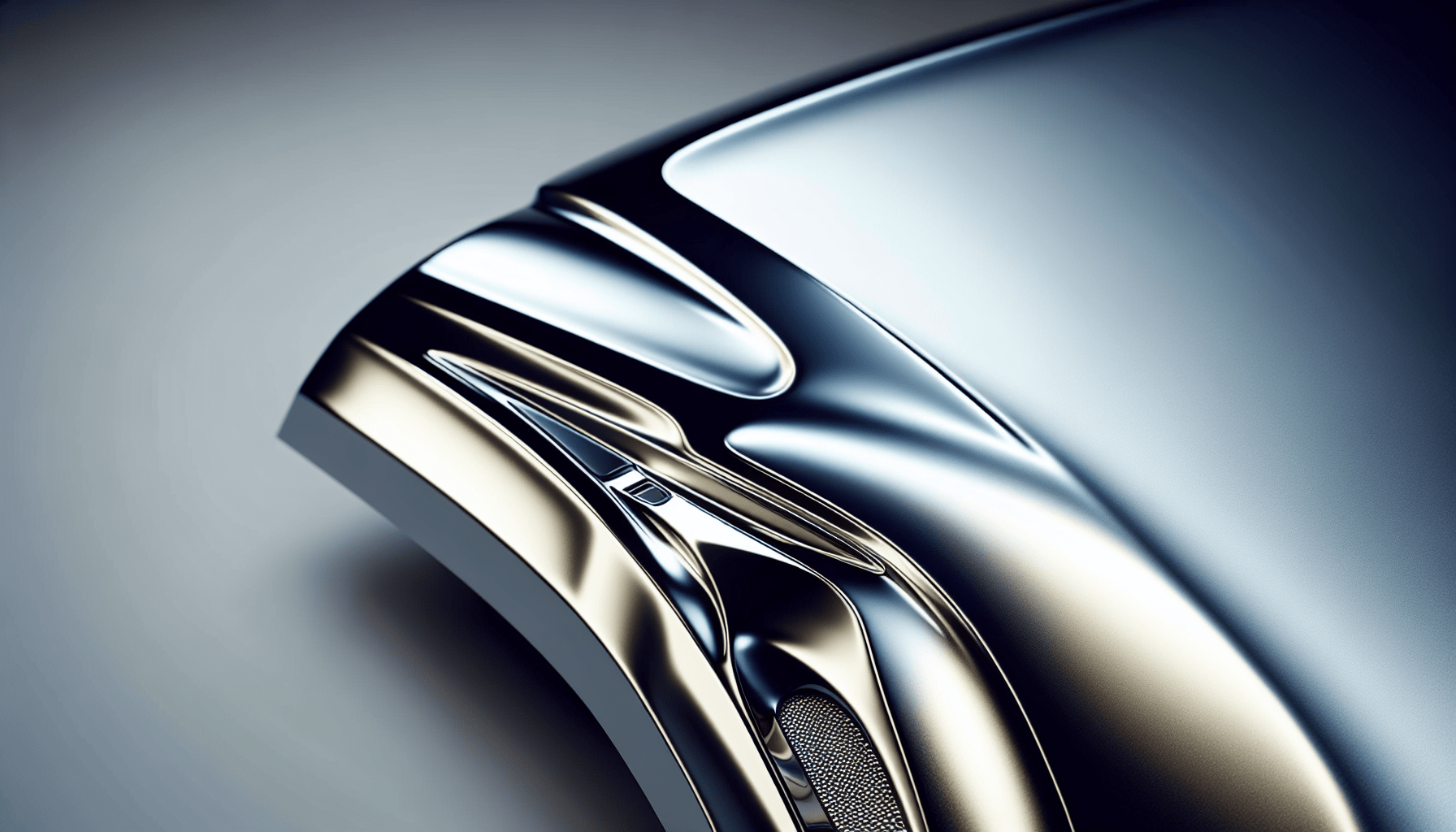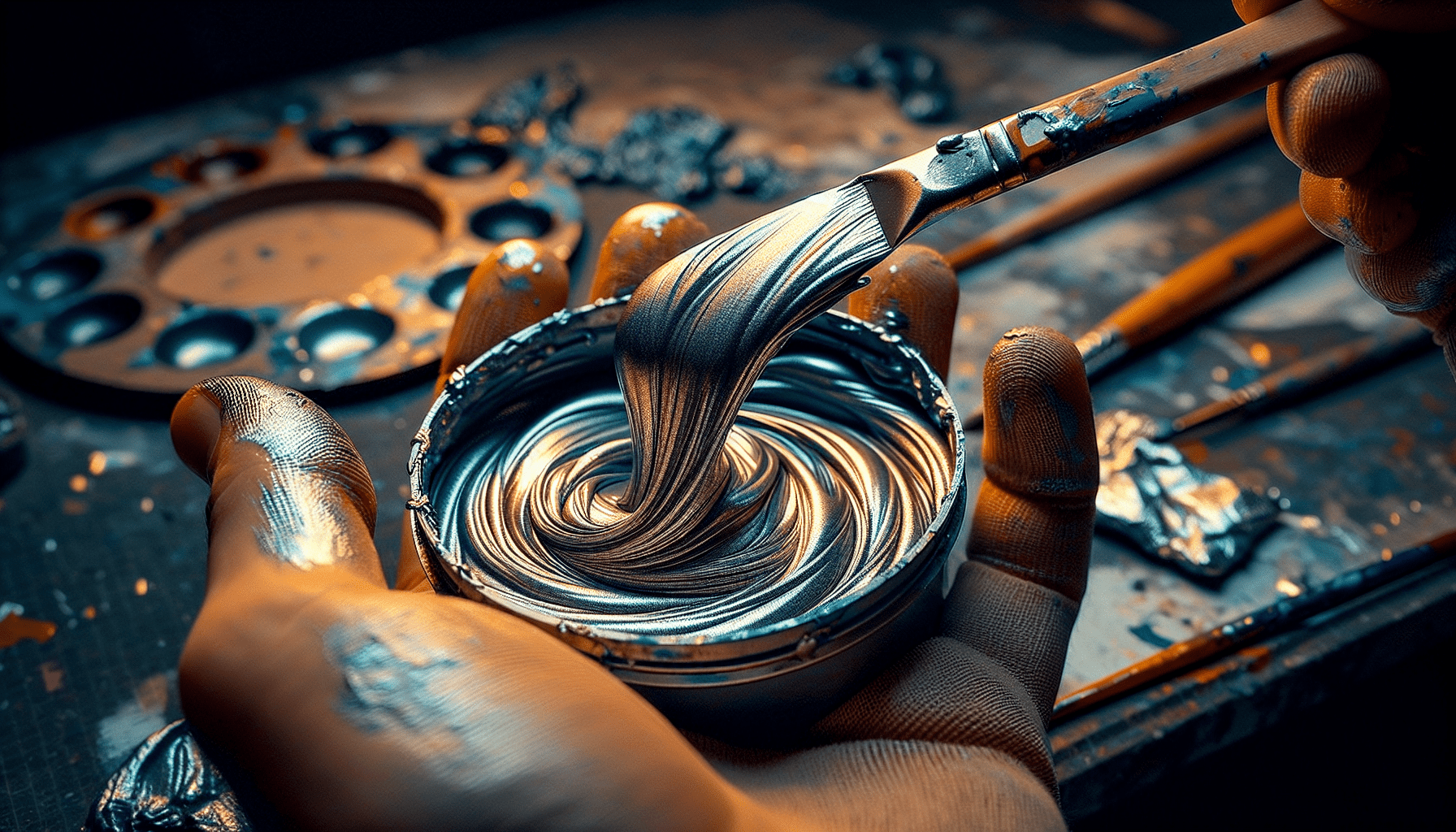Have you ever wondered if you can use metallic paint in a sprayer? Whether you’re a professional painter or a DIY enthusiast, selecting the right tools and materials for your projects is a fundamental step towards achieving a flawless finish. In this article, we will analyze the viability and technique of using metallic paint in a sprayer. We will discuss the types of sprayers, the preparation process, and essential tips to ensure your next painting project is nothing short of perfection.
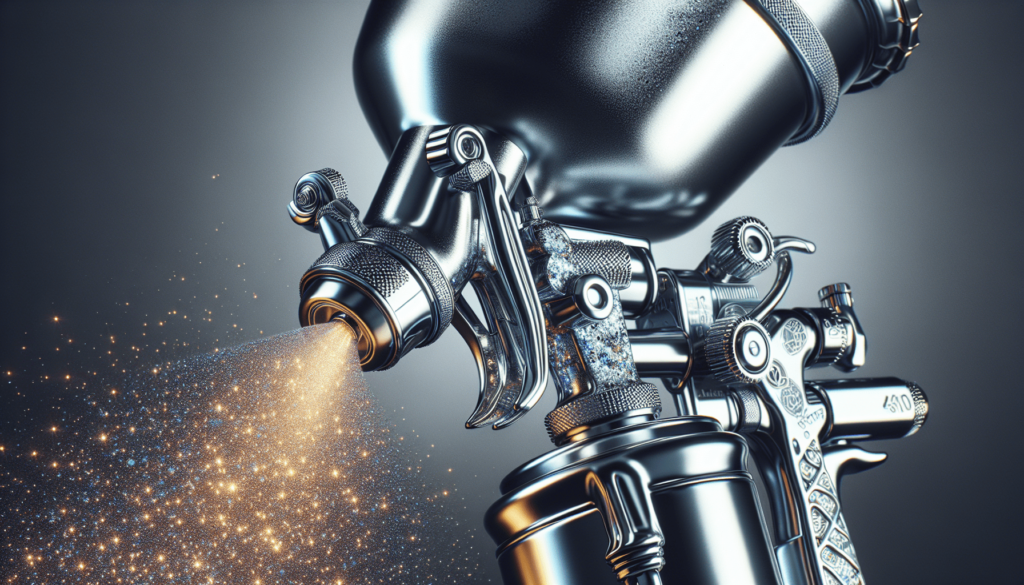
Understanding Metallic Paint
Before diving into the mechanics of using metallic paint in a sprayer, it is essential to understand what metallic paint is and how it differs from other paints. Metallic paint contains tiny metallic particles or flakes that create a shimmering effect, giving surfaces a unique visual appeal. These paints are often used to add a luxe finish to cars, home decor items, and even walls.
Types of Metallic Paint
Metallic paints can be categorized into two primary types:
- Water-Based Metallic Paint: Easier to clean and less toxic, making it better for interior applications.
- Solvent-Based Metallic Paint: More durable and resistant to abrasions, ideal for exterior applications and automotive painting.
Advantages of Metallic Paint
Metallic paint offers several advantages such as:
- Aesthetic Appeal: Adds a luxurious and eye-catching finish.
- Durability: Generally more resistant to chipping and fading.
- Versatility: Suitable for a variety of surfaces, from metal to plastic to wood.
Knowing these basics, the next step is to understand whether these paints can be efficiently applied using a sprayer.
Types of Paint Sprayers
There are multiple types of paint sprayers available, each with its own set of benefits and drawbacks. The main types include:
| Sprayer Type | Description | Suitable For |
|---|---|---|
| Airless Sprayers | Uses high pressure to atomize paint | Large projects, exterior walls |
| HVLP (High Volume Low Pressure) Sprayers | Uses air flow to atomize paint | Fine finishes, detail work |
| LVLP (Low Volume Low Pressure) Sprayers | Uses low air volume at low pressure | Small to medium projects |
| Compressed Air Sprayers | Uses compressed air to atomize paint | Indoor projects, DIY tasks |
Choosing the Right Sprayer
Choosing the correct type of sprayer is critical for achieving the desired results:
- Airless Sprayers: Best for robust, quick applications but may cause overspray.
- HVLP Sprayers: Ideal for detailed work offering better control and a finer finish.
- LVLP Sprayers: Suitable for smaller projects requiring less paint.
- Compressed Air Sprayers: Excellent for small DIY projects due to ease of use and control.
Preparing Your Sprayer and Paint
Preparation is a crucial step when it comes to achieving a smooth and even finish using metallic paint in a sprayer.
Initial Setup
- Read the Manual: Always start by reading the sprayer’s manual.
- Check for Clogs: Ensure the sprayer parts are clean and free of clogs.
- Select the Right Nozzle: Use a nozzle compatible with metallic paint to ensure a finer spray and even distribution.
Preparing Metallic Paint
- Thinning the Paint: Metallic paints often need to be thinned to spray more effectively. Check the manufacturer’s guidelines for the appropriate thinning ratio.
- Mixing: Stir the paint thoroughly to ensure metallic flakes are uniformly distributed.
- Straining: Use a paint strainer to remove any lumps or debris that could clog the sprayer.
Application Process
Applying metallic paint with a sprayer involves several steps to ensure a professional-quality finish.
Step-by-Step Guide
- Test Spray: Always begin by testing the spray pattern on a piece of cardboard or scrap material.
- Adjust Settings: Adjust the sprayer settings based on the test spray to achieve the desired flow rate and pattern.
- Surface Prep: Ensure the surface is clean, dry, and primed if necessary.
- Apply the Paint: Use smooth, even strokes, maintaining a consistent distance from the surface.
- Multiple Coats: Apply multiple thin coats, allowing each to dry before applying the next to achieve an even finish.
Common Mistakes to Avoid
- Overspraying: Too much paint can cause dripping and an uneven finish.
- Inadequate Mixing: Failing to mix the paint thoroughly can result in an uneven distribution of metallic flakes.
- Improper Distance: Holding the sprayer too close or too far can affect the paint application.
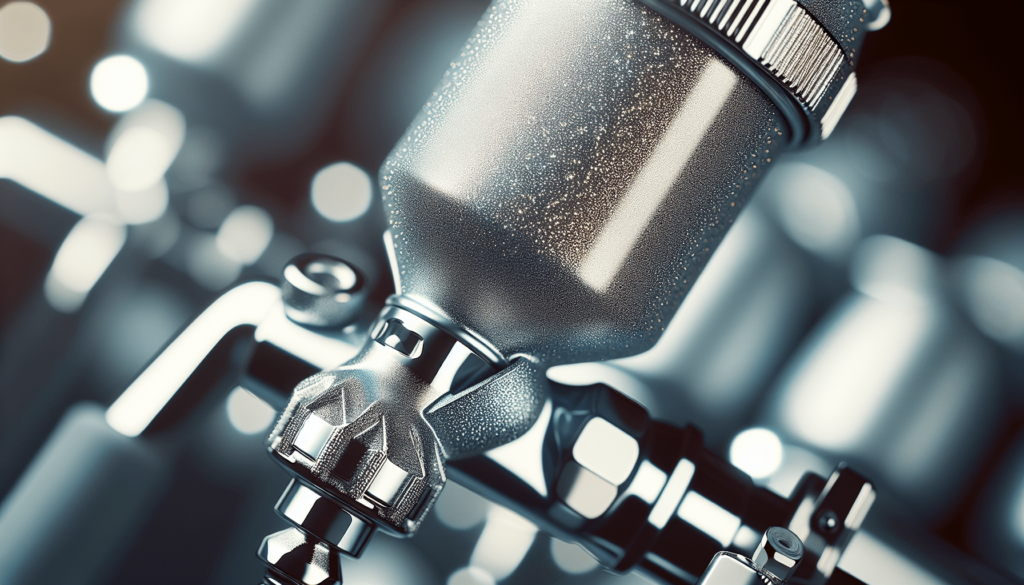
Troubleshooting Common Issues
Knowing how to identify and resolve common issues can save time and ensure a superior finish.
Common Issues and Solutions
| Issue | Cause | Solution |
|---|---|---|
| Clogging | Paint not strained, sprayer not cleaned properly | Clean sprayer parts, strain paint |
| Uneven Finish | Inconsistent spraying technique, improper mixing | Ensure even strokes, mix paint thoroughly |
| Runs and Sags | Too much paint applied in one coat | Apply thinner coats, avoid overspraying |
Maintenance and Cleanup
Proper maintenance and cleanup procedures are essential to prolong the life of your sprayer and ensure its efficiency.
Cleaning the Sprayer
- Disassemble: Take apart the sprayer according to the manual.
- Rinse Parts: Rinse each part with a cleaner suitable for the type of paint used (water for water-based, solvent for solvent-based).
- Brush Clean: Use a brush to remove any residual paint.
- Reassemble and Test: Reassemble the sprayer and perform a test spray with water or cleaner to ensure it’s ready for the next use.
Storing the Sprayer
- Drying: Ensure all parts are thoroughly dried before storage.
- Storage Space: Store in a dry, safe area where it’s unlikely to be damaged.
Safety Precautions
Using metallic paint and sprayers involves exposure to chemicals and tools that require safety precautions.
Personal Protective Equipment (PPE)
- Masks/Respirators: Protects against inhaling paint particles and fumes.
- Gloves: Prevents skin contact with paints and solvents.
- Safety Glasses: Protects eyes from splashes.
Ventilation
Ensure the work area is well-ventilated to dissipate fumes. If working indoors, use fans and open windows to improve airflow.
Enhancing Durability and Finish
To get the most out of your metallic paint project, consider these additional steps:
Sealing and Protecting
- Clear Coats: Applying a clear coat can protect the metallic paint and enhance its shine.
- UV Protection: Especially for outdoor applications, consider a UV-protective topcoat to prevent fading.
Frequently Asked Questions
To help you further, here are some frequently asked questions regarding the use of metallic paint in a sprayer.
Can All Sprayers Handle Metallic Paint?
Not all sprayers are designed to handle metallic paint. Ensure your sprayer is compatible and capable of handling thicker, particle-laden paints.
Is Thinning Always Necessary?
Thinning is often necessary but depends on the type of sprayer and the specific metallic paint. Always refer to the paint manufacturer’s guidelines.
How Many Coats Are Recommended?
Typically, two to three thin coats are recommended to achieve an even, professional finish. Allow each coat to fully dry before applying the next.
Conclusion
In summary, using metallic paint in a sprayer is a viable option for achieving a high-quality, aesthetically pleasing finish. The key lies in thorough preparation, choosing the right type of sprayer, proper application techniques, and following safety guidelines. With attention to detail and careful execution, you can achieve stunning results, whether for automotive projects, home decor, or any other endeavor requiring a touch of metallic elegance.
The next time you take on a painting project, consider these insights and techniques to ensure you achieve the best possible finish with metallic paint.
